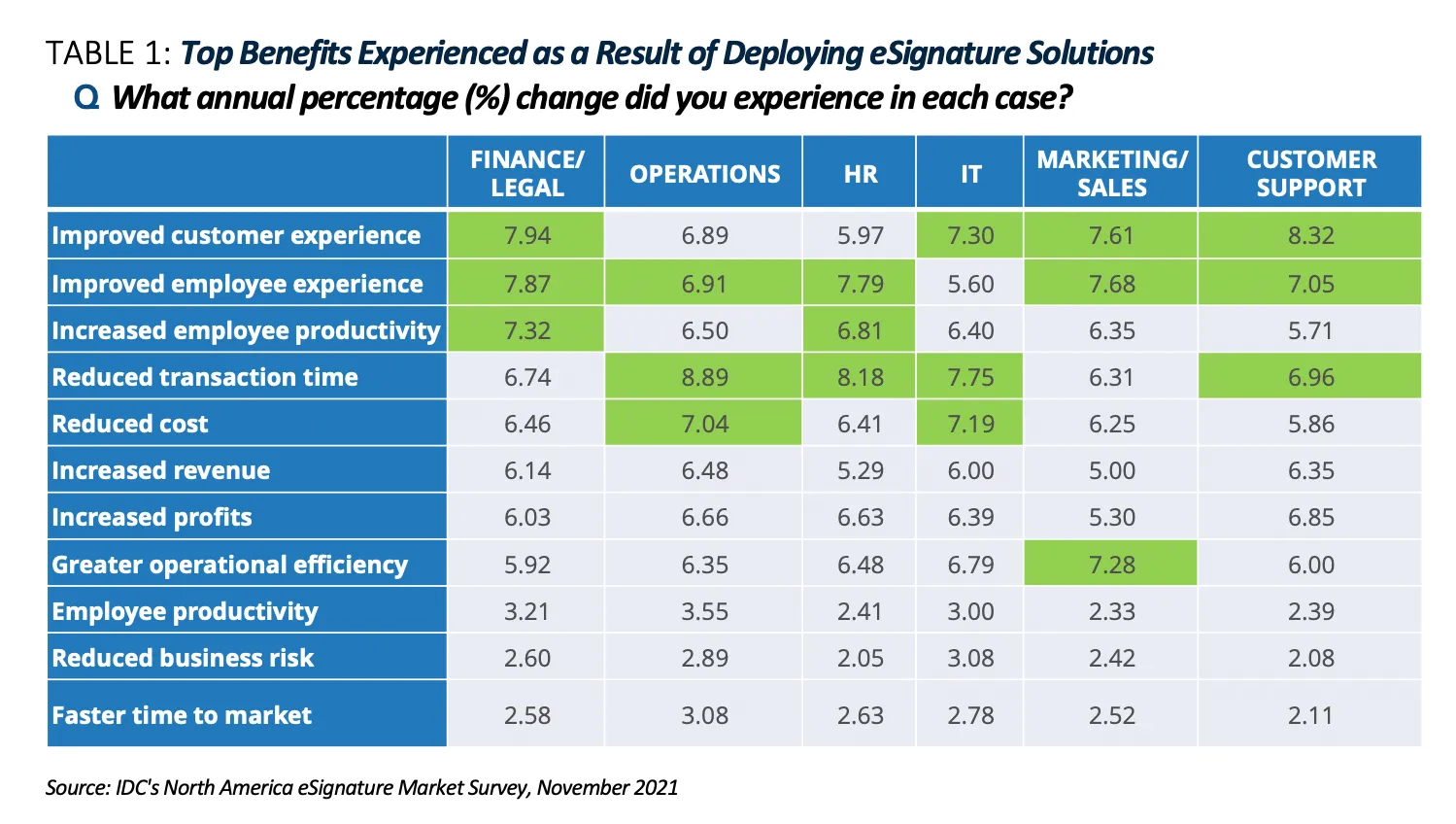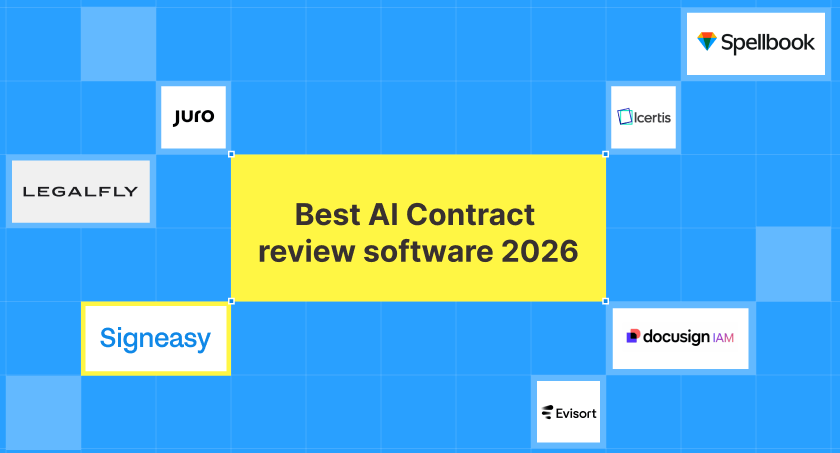According to a Canon survey, 28% of SMBs spend excessive time on admin related tasks. A survey of 1,200 businesses conducted by YouGov revealed that SME employees spend an average of 4 hours each week dealing with paperwork and financial outgoings, such as invoicing, budgeting, and forecasting. This led to a collective loss of £8.72bn annually.
Despite the heavy costs, organizations of all sizes struggle to digitally transform their document workflows. Often due to limited IT resources and competing for technology needs in other business areas. According to IDC’s U.S. IT Quick Poll – Content Services Survey from January 2022, only 44% of companies have fully converted their paper-based workflows to digital ones, with a lack of integration and collaboration still being an issue.
While the digital transformation of contract workflows has become essential for the success of businesses, it is more than just converting existing document processes into digital forms. Instead, it involves taking advantage of technology to enhance operational effectiveness, boost staff productivity, and deliver a better customer experience.
eSignature is an essential tool for digitally transforming business processes, from reviewing to approving and signing contracts. This is especially relevant in departments like HR, Sales, Finance, and Operations, where contracts and other agreements are frequently used. Organizations can improve their efficiency and remain competitive in the digital era by taking advantage of the streamlined, secure, and cost-effective document workflow process enabled by eSignatures.
Taking the pen out of paperwork: What are the drivers and benefits of adopting eSignature solutions
According to the IDC report titled ‘Transforming Business Contract Workflows with eSignatures’, fast-growing midsize organizations (100-1,000 employees) identified improving customer experience as their top motivation for deploying electronic signature technology, with a focus on increasing operational efficiency, reducing transaction times, and lowering costs of paper-based signing processes.
By reducing time to market and providing a better user and customer experience, eSignatures help businesses keep up with larger, better-funded organizations, replacing manual routing, faxing, scanning, and printing methods for signature.
Many departments recognized the advantages of eSignature technology - HR with its remote signing and faster transactions, as well as operations, finance, and administrative roles for vendor onboarding, invoice approvals, and board member agreements. HR also saw eSignature as an excellent opportunity to improve processes like employee onboarding, ESOP agreement workflows, benefits enrollment, and time sheets.
Using eSignature provided benefits to HR and operations functions and improved the business’s IT security and scalability. Furthermore, sales workflows such as NDAs, customer onboarding, and contract lifecycles were streamlined, reducing the sales cycle, increasing customer satisfaction, and allowing remote customers to sign documents.
Small and midsize organizations saw an average 7% annual improvement in customer experience, transaction time, time to market, and operational efficiencies (source: IDC’s North America eSignature Market Survey, November 2021). This improvement was seen across sales, IT, HR, and Operations departments.

However, choosing the right electronic signature software for your business can be a tough nut to crack. So, we went ahead and did some of the legwork for you.
What you need to know to pick an eSignature and contract workflow software, according to IDC
IDC has observed that businesses with 100-1,000 employees prioritize efficiency and applications tailored to their needs. These organizations need intuitive, user-friendly web and mobile apps, the ability to send contracts to multiple signers and sign multiple documents in one session, and the ability to create and save templates, trigger additional workflows, and check real-time status. Cloud-enabled, scalable architecture with high-security features should also be taken into consideration.
These organizations should ensure that the e-signature solution they opt for meets their requirements. Based on IDC’s report, we have listed five questions you need to ask before buying eSignature software. These questions will help the organizations understand if the eSignature software they are considering is the right fit for their business.
1. Does it offer an intuitive user experience?
One of the key things to consider when choosing electronic signature software is the ease of use. If your employees need to spend hours leafing through a manual before getting started, our bet is that you will be on the hunt for another solution before too long.
Choose a software that is easy and intuitive: one that is designed to facilitate a delightful signing experience each and every time. IDC reports that solutions offering features like sending contracts to multiple signers at once, allowing multiple documents to be signed in one session, creating and saving reusable templates, triggering additional workflows, and checking real-time status are important for convenient and streamlined day-to-day operations.
2. Does it integrate with my existing tools?
Your team probably juggles a dozen business applications to manage daily tasks. eSignature solutions must integrate with your favorite apps, like Freshteams, Microsoft 365, Google Workspace, and Salesforce. Prebuilt connectors can help, but powerful and flexible APIs should also be considered.
Documentation should be well-defined, integration should be simple, and the time to value should be short. This will help businesses keep up with rapidly changing requirements and sign, send, and manage contracts wherever they work.
3. Does it offer a seamless mobile experience?
Today’s competitive market calls for a solution that allows employees to securely send, sign, and manage documents on the go. Opt for an electronic signature software that offers apps native to every major platform: iOS, Android, and the web.
Not only will it make document management easier, but this level of compatibility will allow you to leverage instant notifications to ensure that your employees are always on-task and on time.
4. What level of security does the software offer?
When selecting an eSignature vendor, organizations should consider authentication methods (log-in credentials, email, secure digital signatures backed by hardware/software certificates, etc.) as well as compliance and certifications required for the solution (E-SIGN Modernization Act of 2022, eIDAS, HIPAA, SOC 2, etc.). Different departments within the business may prioritize different requirements, so selecting a vendor that provides a wide array of options and stays up-to-date with the latest standards is important.
As a rule of thumb, opt to secure your documents using SSL encryption. Couple that with a detailed audit trail that tracks the entire signing process: from the signer’s email address and device IP to document fingerprint to timestamp. These audit trails can also come in handy as legal evidence should your business ever have to stand up to scrutiny in court.
The regulations with which electronic signature software must comply vary based on the geographical jurisdiction of your business.
- The United States follows the Electronic Signatures in Global and National Commerce Act (ESIGN) and the Uniform Electronic Transactions Act (UETA).
- The EU (European Union) uses electronic IDentification and Authentication Services (eIDAS).
Based on the nature of your use case, you will have to look into other relevant rules and regulations. For example, the solution must be IRS-compliant if you want to file tax returns with electronic signatures.
5. Does the pricing system accommodate expansion?
For organizations that are rapidly expanding, the cost-benefit ratio should be taken into account before making the purchase. You should prioritize fast implementation, an enjoyable user experience, and dependable customer support. Additionally, you should ensure that the solution can reduce the costs associated with paper-based signing processes, fulfills their key requirements for use, security, and compliance, and can scale up as demand grows with no or limited extra costs.
Next steps: Where should organizations start?
eSignature should be included in the organization’s broader strategy for digitalizing, automating, and restructuring document processes to realize their digital transformation goals. Smaller organizations with limited budgets and resources should seek vendors with easy-to-manage solutions that integrate seamlessly with existing applications, meet security and compliance standards, and are scalable for future use cases.
Selecting a vendor with the appropriate technology, who understands the organization’s needs and provides support through implementation, training, and change management is key to successful implementation. Asking yourself the above 5 questions before making a final decision about electronic signature software will help you choose a solution that suits your needs to the T, with ease.
If you are interested in discovering the impact electronic signatures have on contract workflows, access the original IDC report penned by Holly Muscolino, Group Vice President of Content Strategies and the Future of Work. The report provides a comprehensive overview of how businesses are being transformed using eSignatures.












